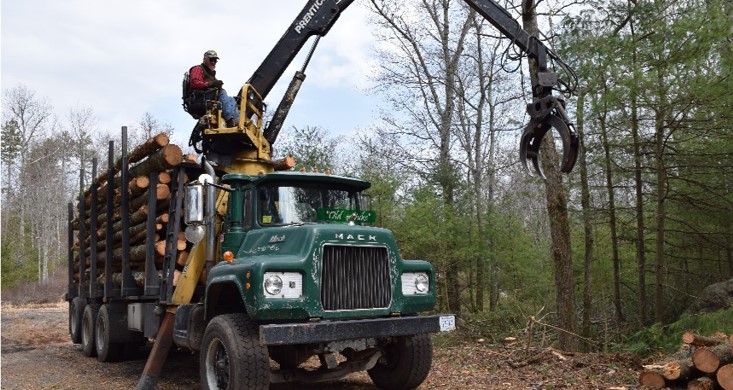February 28, 2023

Written by Paul Jannke, forest industry expert with Forest Economic Advisors (FEA) and Chris Laughton
SHORT-LIVED GROWING PAINS FOR FOREST PRODUCTS IN 2023: FEA
Rising interest and mortgage rates will most likely cause economic activity to slow in 2023. This paints a pessimistic picture for U.S. housing, and consequently forest product markets over the next year, forecasts Massachusetts-based Forest Economic Advisors, LLC (FEA).
This is expected to be short lived, however, with optimism on the horizon in 2024 when FEA, the premier source for North American wood products analysis and information, expects to see an uptick in the economy.
Home building, along with mortgage rates and purchasing power, have a direct impact on lumber demand as the majority of North American houses are constructed with two-by-fours and wooden panels. A flurry of rate hikes in 2022 leads FEA to forecast that U.S. housing starts will drop nearly 17% year-over-year in 2023 to 1.3 million before rebounding to 1.55 million in 2024.
The strong fundamentals — record pent-up demand, the large population of adults in prime home-buying years, record home equity, the aging housing stock and historically low inventories of homes for sale — that contributed to the surge in demand during the pandemic (when rock-bottom interest rates sent homebuyers into a purchasing frenzy and prices soared) are still simmering below. With these factors underpinning softwood lumber’s main end-use market, housing starts will remain above pre-pandemic levels.
Market weakness follows two volatile years. The pandemic spurred governments to drop interest rates, which in turn caused a flurry of home buying and caused lumber prices to skyrocket to record highs as mills struggled to meet demand. Labor shortages and transportation bottlenecks exacerbated the supply shortage. Lumber prices dropped sharply in 2022 and are expected to fall but remain above historical averages in 2023 due to higher production costs, the need for dealers to rebuild inventories, and the expectation for labor and supply constraints to continue to hamper production for the next two years.
The high prices reached during the pandemic led mills to invest in capacity expansions, which are expected to become operational this year. This increased supply will more than satisfy weakening markets and keep downward pressure on prices throughout the remainder of 2023. Softwood lumber prices, however, are forecast to be extremely volatile through 2024 as the effects of COVID-19 linger and low stocks force dealers to buy just enough wood to meet their immediate needs at higher prices than they want. This will force prices sharply lower in a cycle that will repeat itself over the next year.
Softwood lumber outlook
North American softwood lumber demand is driven by U.S. consumption. In 2021, as prices soared to record highs, U.S. consumption reached a 15-year peak. FEA forecasts that U.S. lumber consumption was relatively flat year-over-year in 2022 but will decrease by 9% in 2023 as end-use market activity deteriorates in response to the U.S. Federal Reserve raising interest rates. With other markets expected to improve in 2024, U.S. lumber consumption is expected to grow nearly 9% to 51.8 BBF.
Overall demand for softwood lumber in North America will fall 8% to a nine-year low in 2023, following a 1% drop in 2022, as end-use markets weaken and a recession remains likely. This will be short-lived, however, with a 7.5% rise forecast in 2024 at 62.2 BBF.
This year’s short-lived downturn for all of lumber’s end-use markets, with the exception of industrial production, will be followed by a return to market growth in 2024. Residential repair and renovation (R&R), however, is expected to take longer to rebound. To paint a picture, after R&R spending rose nearly 4% in 2021 and an estimated 19% in 2022, FEA forecasts it will tumble 21% this year.
Still, by historical standards, the amount of money that people are expected to spend on residential improvements will remain high. This is because of rising home equity, a lack of new-entry-level and first-move-up homes due to rising unaffordability, and the aging housing stock.
International movement has shifted and will continue to impact U.S. supplies after high prices made North American offshore exports less attractive to international buyers, most notably China. Exports to China are expected to continue falling in 2022−23. Sanctions imposed on Russia following its invasion of Ukraine will push more Russian lumber to China, decreasing demand for North American−produced lumber. China also imposed new quarantine restrictions on imports of pine lumber from North America, which has dramatically increased the cost of shipping southern yellow pine and spruce-pine-fir lumber there. Finally, strong domestic consumption and relatively high prices will further hamper North American exports to China.
As a result, North American offshore exports will decrease 7.9% in 2023, following a steep 23% drop in 2022. With the expectation for China to ease its restrictions on North American pine, and the likelihood for Western sanctions on Russian timber and lumber exports to be lifted by 2024, we expect offshore exports to pick up 11%.
Pulp Outlook
U.S. graphic paper consumption is expected to trend lower over the next five years, averaging 23.9 million tons, 14% below the average of the past five years. This grim forecast is due to the structural shift from paper to electronic media, declining paper-based advertisements, and the dropping volume of mail. The demand outlook for paper packaging is more positive as it’s increasingly substituted for plastic packaging and ecommerce grows. U.S. paperboard and packaging production is expected to reach 55.2 million tons by 2026 as a result, up 6% from 2022.
U.S. pulp production is forecast to fall to 48 million tons this year, pressured by continued weakness in the graphic paper sector, and as weaker economic conditions limit demand from paperboard and packaging producers. In the near term, a stronger U.S. dollar will hurt the competitiveness of pulp producers here and push exports lower, while expanding pulp capacity in the Southern Hemisphere will lead to greater imports over the next five years. The combination of weaker domestic demand and a deteriorating trade position makes further contraction of pulp capacity possible.
In the Northeast, pulpwood prices climbed sharply in 2022 as a result of steady demand and severe constraints on logging and trucking capacity. Demand for low-quality woodfiber will likely decline in 2023 alongside weaker pulp and paper markets and relieve pressure on pulpwood pricing. Past this year, demand for pulpwood will benefit from the recently announced expansion of Louisiana-Pacific’s Houlton, Maine siding mill. The conversion of a paper machine to bleach board production at Sappi’s Skowhegan, Maine mill will also bolster the prospects of woodfiber demand in the region.
WEBINAR: 2023 Northeast Forest Products Outlook
On Thursday, March 2, Farm Credit East hosted a discussion of lumber markets, pulpwood and biomass, as well as the health of the forest industry supply chain going into 2023. Paul Jannke, FEA forest industry expert, presented this webinar, providing his perspective on the region’s forest product markets.
Farm Credit East Disclaimer: The information provided in this communication/newsletter is not intended to be investment, tax, or legal advice and should not be relied upon by recipients for such purposes. Farm Credit East does not make any representation or warranty regarding the content, and disclaims any responsibility for the information, materials, third-party opinions, and data included in this report. In no event will Farm Credit East be liable for any decision made or actions taken by any person or persons relying on the information contained in this report.




